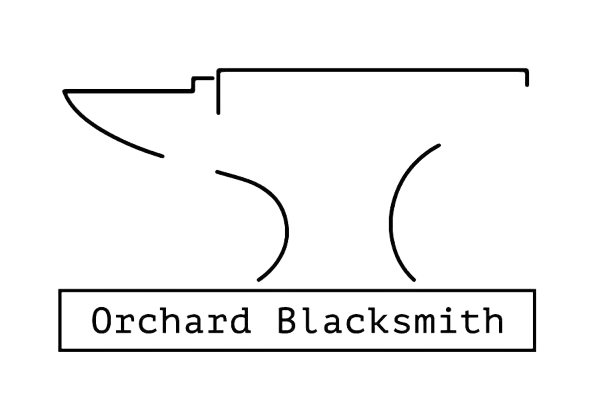The Art of Riveting: A Blacksmith’s Alternative to Welding
In the modern metalworking world, welding often gets the spotlight. It’s fast, strong, and widely used in everything from structural steel to sculpture. But in blacksmithing, where craft, tradition, and aesthetics matter just as much as strength, rivets can be the better choice — and sometimes, the only right one.
So when should you choose a rivet over a weld? Let’s take a closer look.
What Are Rivets?
A rivet is a mechanical fastener, typically made from round bar stock, used to join two or more pieces of metal together. The process involves heating the rivet, inserting it through holes in the pieces being joined, and hammering both ends to form "heads", securing the pieces in place.
Unlike welding, rivets do not melt the metals being joined — they connect by pressure and physical deformation, not by fusing materials together.
When to Use Rivets Instead of Welding
1. Historical or Traditional Work
If you're working on a historical restoration, building period-accurate furniture, or forging in a traditional style, rivets are often the only appropriate fastener. They were the go-to method for centuries — long before welding equipment existed.
Why it matters: Welding can look out of place on historically inspired pieces. Rivets preserve the authenticity of pre-industrial design.
Example: Hinges, latches, and architectural hardware for 18th-century homes or reenactment settings.
2. Aesthetic and Visual Appeal
Rivets aren't just functional — they're beautiful. They can add texture, rhythm, and hand-crafted detail to a piece. Where welds might be hidden or ground down, rivets are meant to be seen.
Why it matters: Rivets give your work a timeless, hand-forged look that welding can’t replicate.
Example: Exposed rivets in a custom iron gate or artistic furniture.
3. No Welding Gear? No Problem
Not every shop is equipped with a MIG or TIG welder — and that’s okay. Riveting only requires basic tools: a forge, hammer, drift/punch, and maybe a helper for larger work.
Why it matters: Rivets allow for strong, permanent joints even in low-tech or off-grid setups.
Example: Bushcraft forging, homestead shops, mobile demos, or historical village settings.
4. Avoiding Heat Distortion
Welding generates intense, localized heat, which can warp thin metal or create stress points that affect the final shape. Riveting introduces less direct heat and spreads out the stress more evenly.
Why it matters: If you're working with thin sheet metal or decorative parts, rivets help you maintain accuracy and avoid distortion.
Example: Assembling sheet metal components like armour, lanterns, or small boxes.
5. Easier to Repair or Replace
A riveted joint can be drilled out and replaced. That’s not always true with a weld — especially if it's hidden or poorly placed.
Why it matters: Rivets offer modularity and easier future repairs, which is great for items meant to last generations.
Example: Farm tools, wagon parts, or anything expected to be repaired in the field.
6. Joining Dissimilar Metals
Welding different metals (like steel to brass, or copper to iron) is tricky — and can often lead to brittle, unreliable joints without special knowledge or filler materials.
Why it matters: Rivets allow you to mechanically join different materials without worrying about metallurgical compatibility.
Example: Forged knife with a brass guard or wooden handle scales attached with copper rivets.
When Welding Might Be the Better Choice
While rivets have plenty of advantages, they’re not always the right tool for the job. Welding might be better when:
You need a clean, seamless look with no exposed hardware.
The joint must withstand constant vibration or shock loads (like in motors or industrial machinery).
You’re dealing with structural applications that require the strongest possible bond.
You're producing in high volume where time efficiency is key.
Final Thoughts
Welding and riveting each have their place — and the best blacksmiths know when to use one over the other.
Rivets offer character, authenticity, and flexibility that welding simply doesn’t. They honour traditional methods while remaining incredibly functional. Whether you're forging a gate, repairing a tool, or crafting a historical replica, rivets remind us that the old ways still work — and sometimes, they work even better.
What About You?
Have you used rivets in your forge? What do you prefer — the precision of a weld, or the handmade beauty of a rivet? Share your thoughts or photos in the comments below!
If you are interested in discussing a potential project with us, please do not hesitate to contact us.
